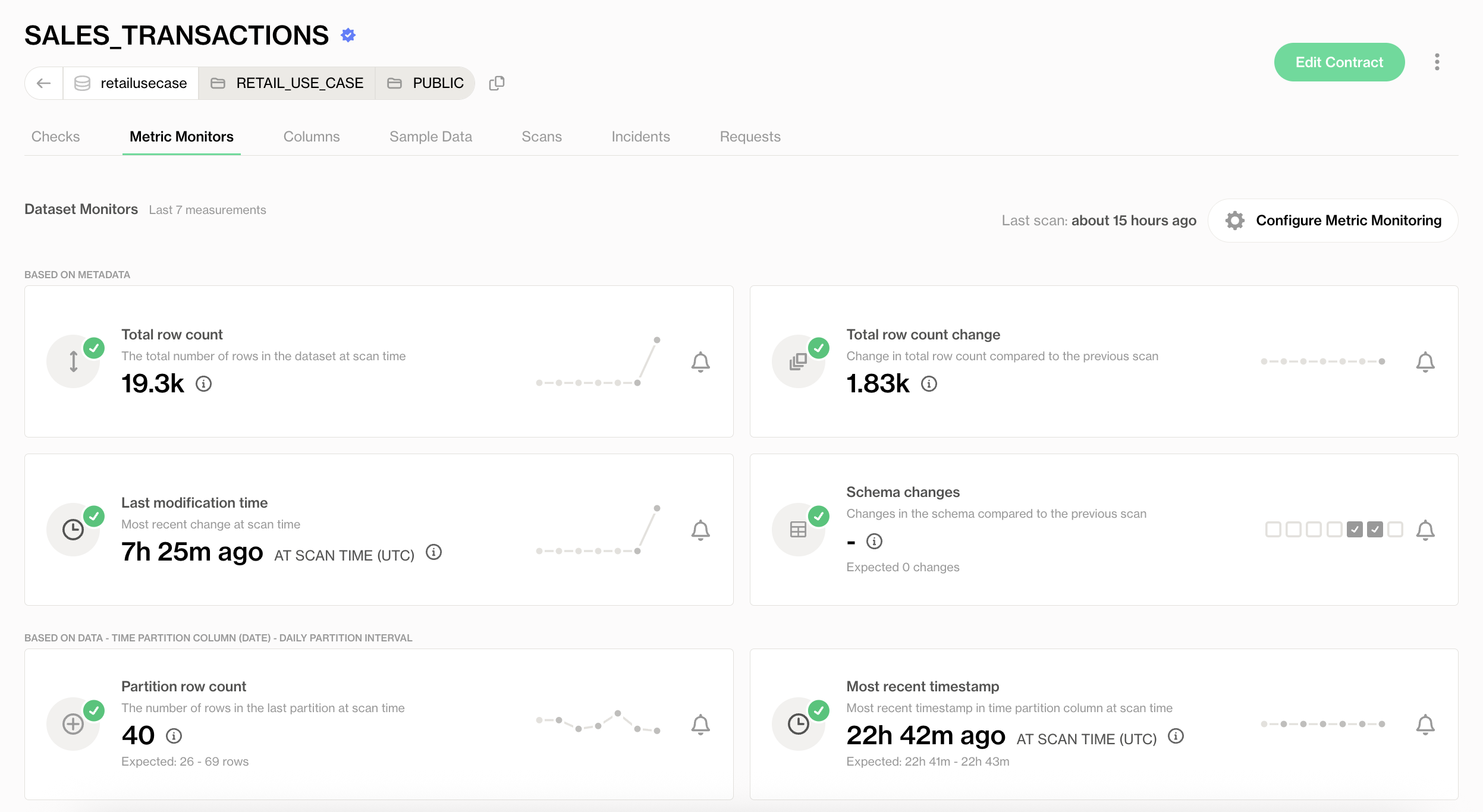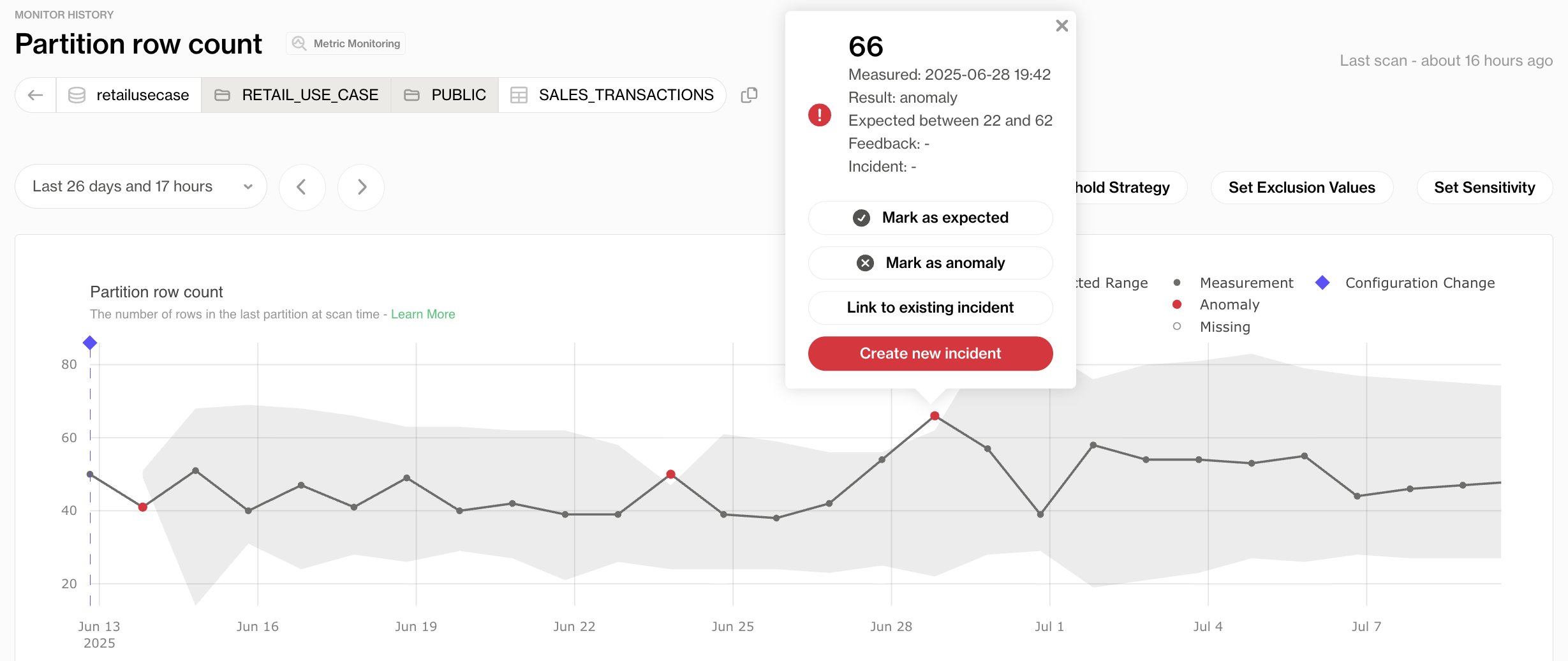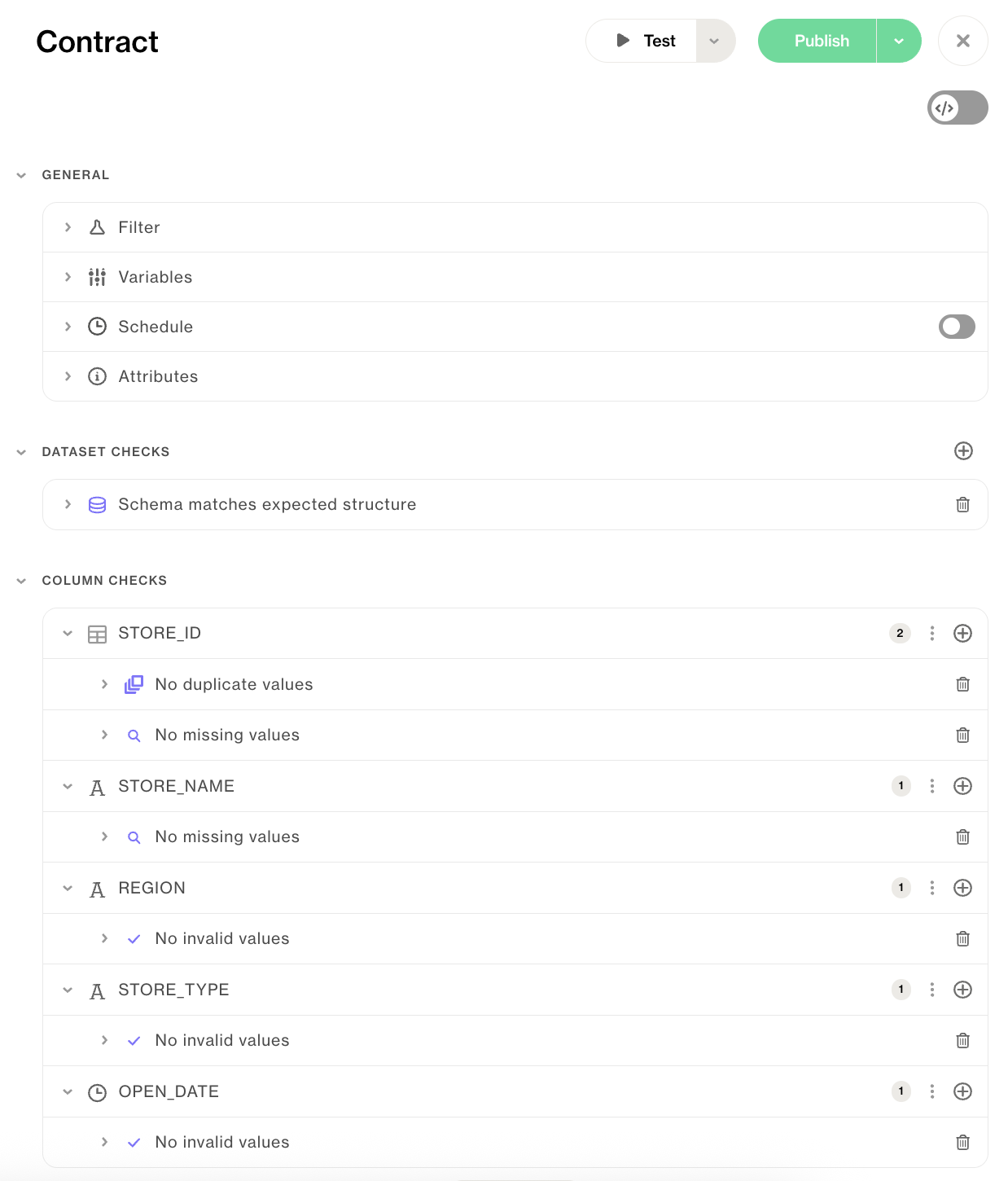If you've been in retail for long enough, you've definitely noticed how much more complex data ecosystems have become, especially in terms of volume, variety, and velocity. One purchase can connect with e-commerce sites, POS systems, inventory tools, marketing platforms, and fraud-prevention services, and they all need to share information quickly. (Yeah, you have your work cut out for you!)
This dynamic puts retailers in a position where they must manage the quality of their data with care, since just a few inaccurate records can lead to massive disruptions. As a consequence, top retailers are taking steps to monitor and test the quality of their data throughout the whole pipeline, from ingestion to destination.
In this article, we will go over some ways retailers can improve efficiency — and cut costs — by preventing data errors with end-to-end data quality management.
From Commerce to E-Commerce: Why Retail Data Quality Matters More Than Ever
Commerce is one of the oldest activities ever created by humanity. And one that has been closely connected to the most significant changes in our society, from the creation of money to navigation and colonial trade, from the Industrial Revolution to the development of shopping malls.
More recently, as we know, the internet has transformed retail by facilitating e-commerce, expanding global reach, and moving customer behavior toward convenience and customization. Retailers have reacted by creating strong online presences, implementing omnichannel strategies, using data analytics for personalized marketing, and embracing emerging technologies such as AI and IoT to boost productivity and consumer engagement.
The result is that the global retail market has been growing exponentially in the past decades. According to The Business Research Company: "The retail market size is expected to see strong growth in the next few years. It will grow to $41443.72 billion in 2029 at a compound annual growth rate (CAGR) of 7.9%. The growth in the forecast period can be attributed to technology advancement, impact of data analytics, and consumer preference for shopping local."

But with new opportunities come new challenges. Retail runs on a vast amount of data, probably more than just about any other industry. And the most heated debate right now has been around data quality management.
Data is a powerful asset to any business, but only if you can process it quickly and actually make sense of it.
Top 3 Data Quality Challenges in Retail
The most prevalent concern nowadays is not how to get more data, but how to get more *good* data. As the complexity of data grows, teams are finding it more difficult to maintain quality.
The hardest data quality challenges in retail today don't come from dealing with duplicated or invalid values — one line of code can solve that. The true challenges now are about implementing the right operational models. And that involves dealing with three main issues:
- Challenge 1: Inadequate Infrastructure
- Challenge 2: Fragmented Data
- Challenge 3: Organizational Silos
Let's discuss each of these in more detail:
1. Inadequate Infrastructure to Handle Velocity
In retail data management, speed is everything. When systems lack real-time visibility on the health of their data, businesses struggle to keep track of inventory updates, pricing changes, and customer interactions. If your insights come in even just a day late, you might miss out on opportunities or end up making decisions that aren't really relevant anymore.
The solution is continuous monitoring with quick issue management. Retailers need infrastructure that can detect and respond to issues the moment they appear. Key steps include:
- Automated checks to monitor data freshness, volume, and schema changes, as well as key column metrics.
- Instant alerts that notify the right team the moment something drifts.
- Shared dashboard where business and engineering teams can track and resolve issues together.
- Root-cause tools to find exactly where and why a problem started.
2. Multiple Data Sources and Fragmented Data
Retailers often have data coming in from multiple sources—online transactions, in-store purchases, loyalty programs, returns, and even social media. There is not much to do about it; retailers have to work with fragmented data systems.
However, multiple disconnected platforms storing information separately create barriers that make it difficult to maintain consistency across channels. This fragmentation complicates daily operations and makes a unified business view nearly impossible.
The solution starts with visibility and prevention. Rather than forcing every system into a single platform, retailers need a framework that lets data stay where it lives while applying consistent rules. That means:
- Centralized monitoring to track data quality across all sources in real time.
- Data contracts that define formats, validation rules, and acceptable thresholds before information moves downstream.
- Reconciliation checks that enable data to flow reliably between systems while preserving their autonomy.
3. Organizational Silos and Lack of Unified Data Governance
Data silos remain one of the longest-standing challenges facing retail. With different departments operating in isolation, the results will be inconsistent insights, inefficient operations, and even increased compliance risks.
Unified governance aims at creating a cohesive infrastructure that transforms fragmented systems into a single, integrated backbone. In the end, the solution comes down to clear ownership and shared standards:
- Defined data owners so every critical dataset has a responsible team.
- Shared policies and processes that unify rules for access, validation, and lifecycle management across the organization.
- Regular reviews to ensure policies evolve with new systems and regulations.
Consistent standards lead to better data quality, smoother operations, and stronger compliance. If there are no clear processes in place for managing data quality, bad data will certainly slip through the cracks.
The Cost of Poor Data Quality
All of the issues above have one thing in common: they cost money. Inconsistent, fragmented, and untrustworthy data can be the silent killer threatening your retail operations and profit margins.
According to a study by Gartner in 2021, companies lose about $12.9 million each year due to poor data quality. That’s definitely not the kind of money an industry with tight margins can afford to lose.
Poor data quality can drain profits and efficiency across multiple areas:
Slowing operational efficiency across all departments:
- Employee time wasted on data corrections,
- Delayed decision-making and response to trends,
- System integration failures,
- Unreliable machine learning models and predictions.
Increasing compliance risks with customer data regulations:
- Reduced trust in reports,
- Privacy breaches,
- Audit failures.
Disrupting personalization efforts that drive competitive advantage
- Failed customer segmentation,
- Broken loyalty programs,
- Ineffective marketing campaigns.
Creating negative experiences that damage brand reputation
- Frustrating service interactions,
- Inconsistent cross-channel experiences.
At the end of the day, data quality controls will make or break retail operations. When data flows smoothly through POS, CRM, and e-commerce systems, teams benefit from accurate inventory, personalized customer experiences, smart promotions, effective staffing plans, and regulatory compliance.
But if you ignore those controls, the negative consequences appear quickly: stock mismatches, bad customer segments, failed campaigns, misallocated staff, and compliance risks.

The Solution: End-to-End Data Quality Management
As we could see, the real challenge isn't just finding bad data — it will always be there. It's creating data management workflows that prevent inconsistencies from reaching data consumers and identify problems before they affect business operations.
The solution requires a fundamental shift away from reactive data quality firefighting and toward end-to-end, collaborative data quality management.
Start Right, Shift Left Strategy
To guarantee quality throughout the whole data pipeline, Soda empowers businesses through a start-right, shift-left approach, combining both detection and prevention methods.
- Start right: detect anomalies and quality issues close to where data is consumed.
- Shift left: prevent future issues by embedding checks and contracts where data is created.
.jpg)
This dual approach ensures that data issues are detected early, corrected quickly, and prevented from recurring — improving quality where data is produced, not just where it’s consumed.
Start Right with Data Observability
Data observability involves monitoring and assessing data health throughout its lifecycle. It detects issues in metadata, metrics, and logs to help teams trust their data.
- Begin by detecting anomalies in metrics at scale using automated anomaly detection and data quality scans.
- Identify root causes quickly and resolve problems before they spread to downstream systems and business processes.
Metrics Monitoring: Real-Time Observability
Soda's automated systems monitor data quality of all your datasets 24/7, immediately after onboarding — catching anomalies as they happen rather than weeks later during manual audits.
- Volume monitoring detects unusual spikes or drops in transactions
- Pattern recognition identifies data format inconsistencies before they spread
- Threshold alerts notify teams immediately when data quality degrades

Incident Management: Fast Root Cause Analysis
Soda's observability tools help teams understand why anomalies occurred and which systems need attention, reducing mean time to resolution from days to hours.
- Faster problem resolution minimizes business impact
- Pattern learning prevents recurring issues
- Cross-system visibility identifies root causes across complex data pipelines

Getting started with observability is quick and easy. It reveals hidden problems with minor setup and offers immediate benefits across various datasets. But an anomaly doesn't necessarily indicate a data quality issue.
Once visibility is in place, prevention becomes the goal.
Shift Left with Data Testing
Data testing ensures that your data meets business expectations before reaching stakeholders, dashboards, or downstream systems.
- Apply standards through collaborative data contracts, incorporating quality checks upstream to catch issues early.
- Reduce incidents and reassure data consumers.
On the other hand, testing does take a bit more effort at the beginning. It involves creating specific quality checks, setting data expectations, and rules. But the investment really pays off. If a test fails, it clearly points to a data quality issue — no room for guesswork or false alarms.
Data Contracts: Collaborative Standards
Soda's collaborative data contracts establish quality expectations where data is produced, ensuring consistency from source to consumption.
- Business stakeholders define what "good data" looks like
- Technical teams implement validation rules and monitoring
- Automated systems enforce standards before data reaches production

Having the right tools is important, but remember, technology is only as good as the rules you have in place. Companies really need to establish what "good data" means for them and set up tools that can monitor and flag any issues instantly and automatically.
The result will be fewer incidents, faster delivery, and complete trust in every dataset used for business decisions.
Data Quality as a Strategic Asset for Retailers
Organizations that treat data quality as a strategic capability will have the reliable, trusted data foundation needed to win in an increasingly competitive and data-driven market. Good use of retail data can help detect consumer behavior, shopping patterns and trends, improve customer service, and increase customer retention and satisfaction.
However, when bad data gets past controls, the damage doesn’t stay in IT; it shows up as lost revenue, wasted labor, compliance risks, and frustrated customers.
By improving infrastructure, creating a cohesive data strategy, and optimizing data processes through integration and automation, retailers will be able to continue leading the way in innovation — and keep their customers happy, of course.
We can proudly say that retailers implementing Soda's comprehensive data quality approach have reported measurable improvements:
- Reduction in failed marketing campaigns due to invalid segmentation
- More accurate daily revenue reporting
- Reliable, real-time inventory sync between channels
- Faster resolution cycles via ticket automation
- Improved ML model accuracy with cleaner training data
Next Steps: Transform Your Data Quality Approach
Ready to cut costs and improve efficiency by preventing data errors with end-to-end data quality management?
Book a personalized demo to see how these solutions can work with your actual retail data.

.png)
.png)











